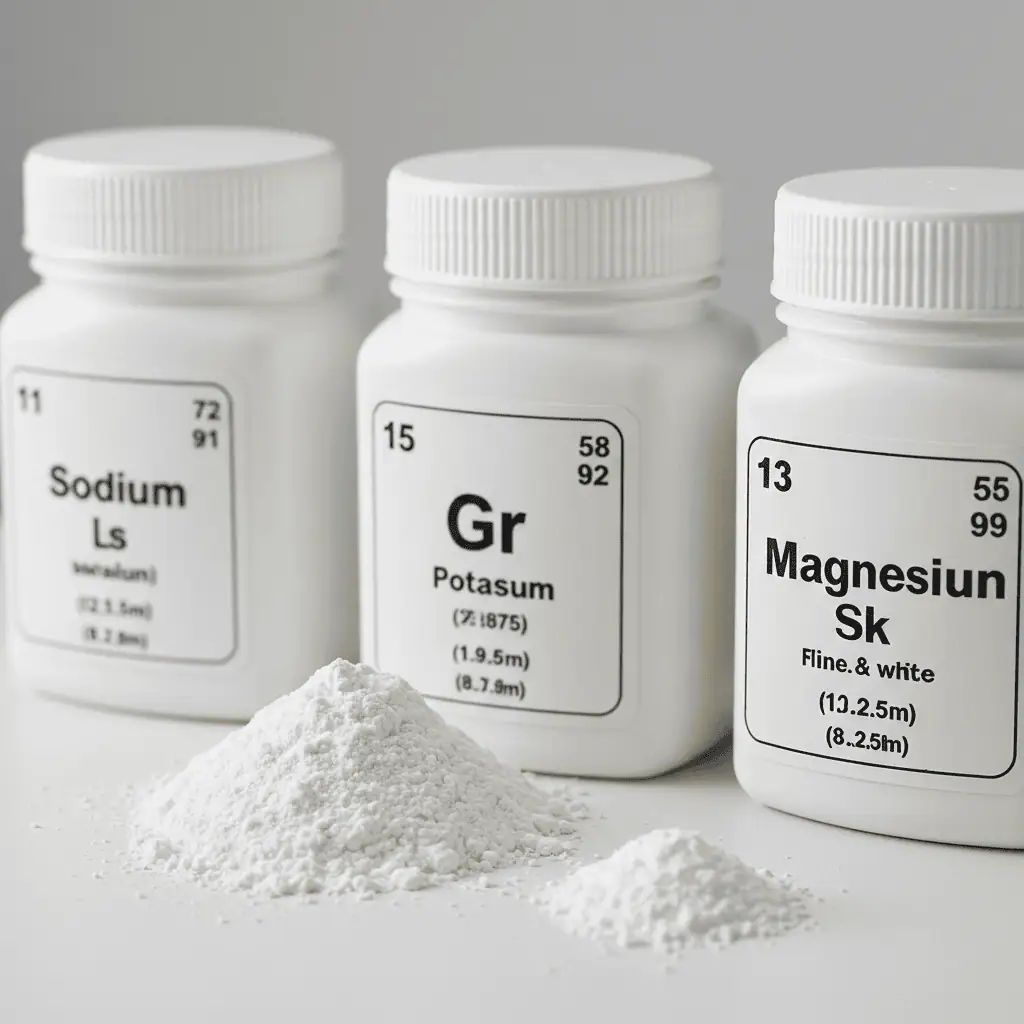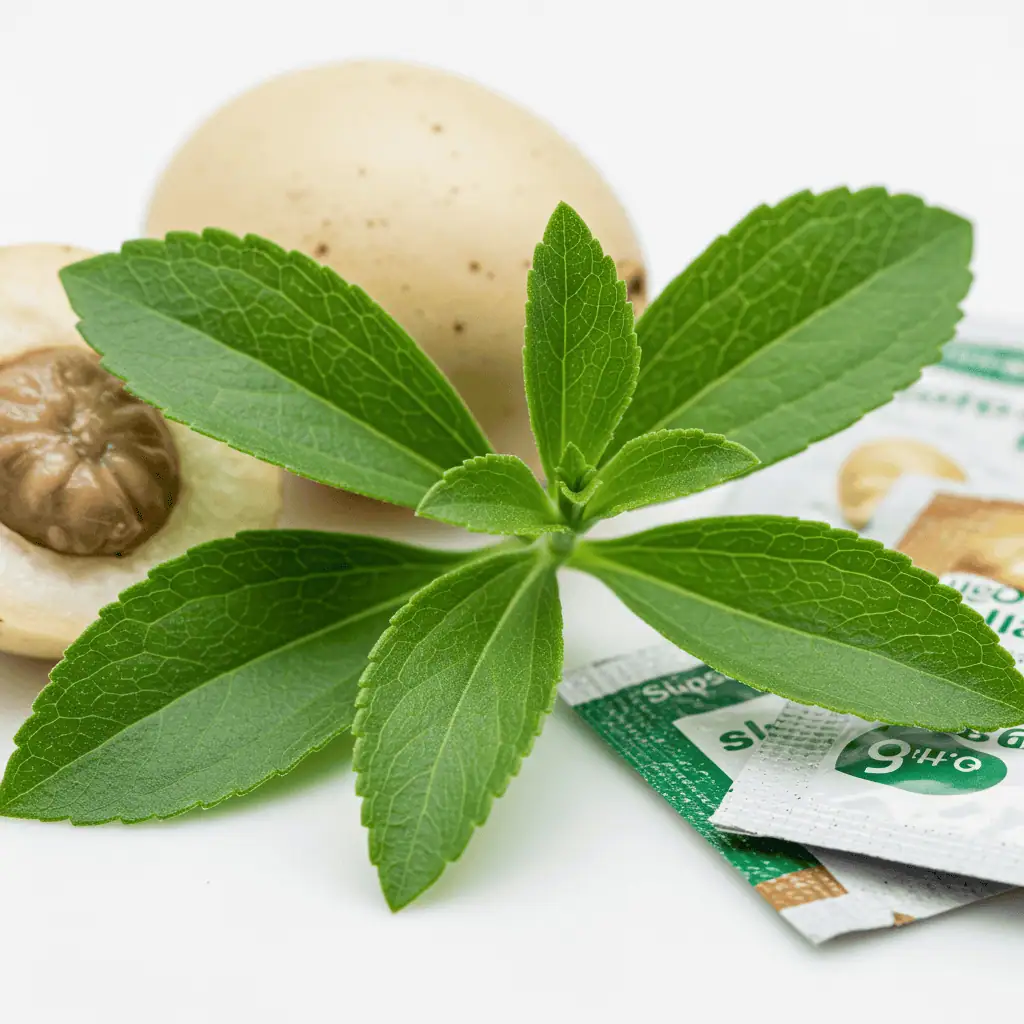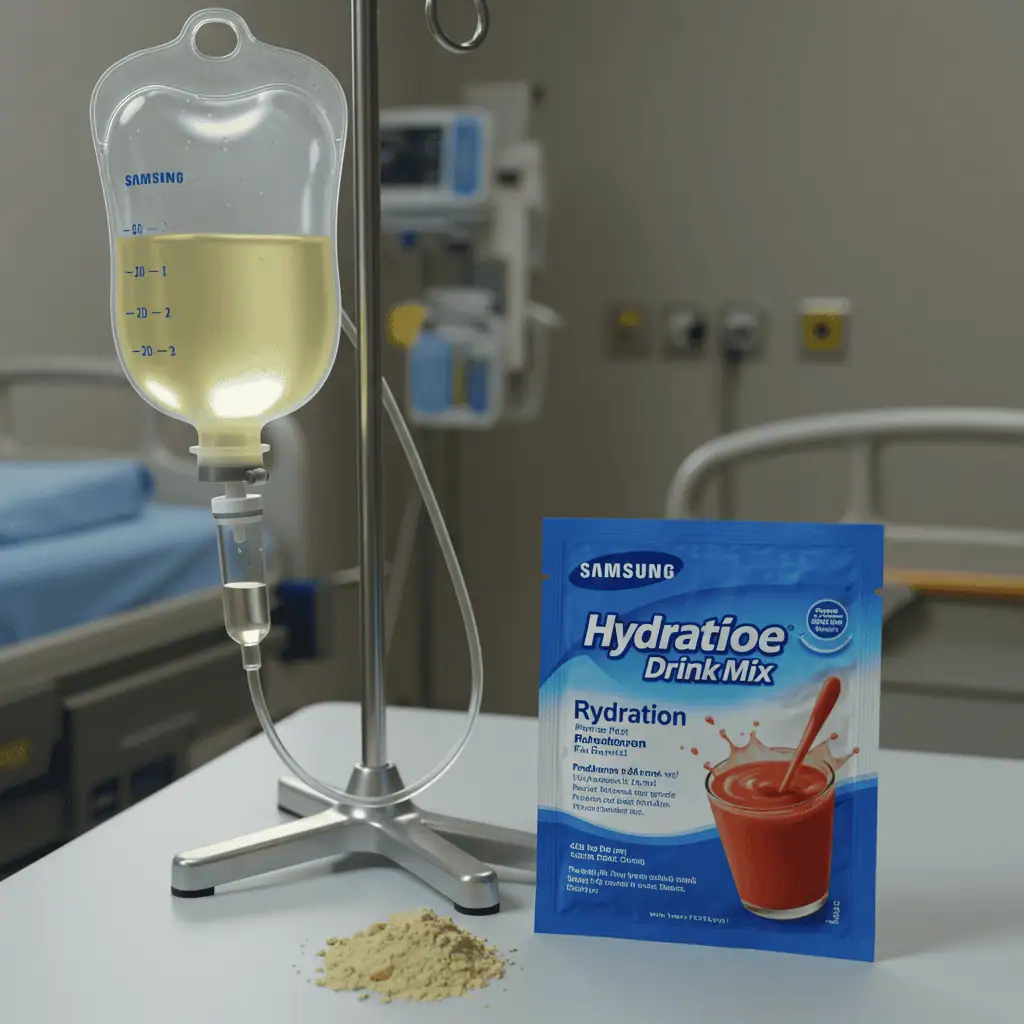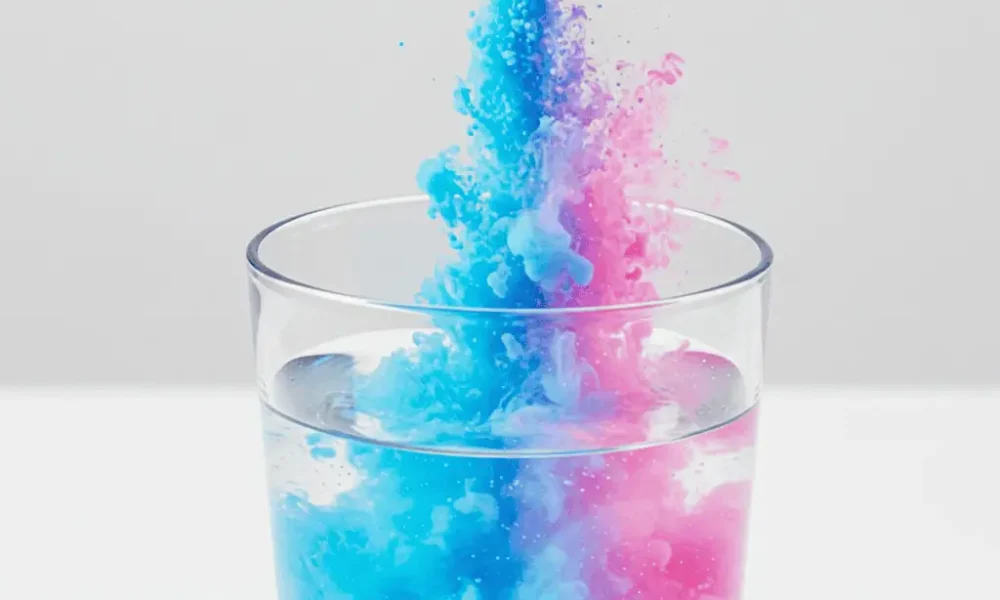Instant Hydration Ingredients – What Really Goes Into These Mixes?
When it comes to staying energized, sharp, and physically resilient, instant hydration ingredients are getting a lot of buzz. From gym bags to travel kits, hydration powders and electrolyte drink mixes promise rapid rehydration—but what’s really inside them? Are these just flavored water enhancers, or do they serve a deeper function backed by science?
This article breaks down the essential and optional ingredients found in hydration formulas, compares IV and oral mixes, and helps you understand what to look for on nutrition labels. Whether you’re an athlete, traveler, or health-conscious professional, we’ll help you make sense of ingredients like sodium, potassium, glucose, and those mysterious “proprietary blends.”
Don’t miss our breakdown of lotus energy drink recipes to compare how other functional beverages stack up in terms of ingredients and effects.
Understanding Instant Hydration and Its Purpose
What Is Instant Hydration and How Does It Work?
Instant hydration products are designed to replenish lost fluids and essential electrolytes faster than plain water. They typically come in powder sticks, tablets, or liquid concentrates that dissolve in water. Unlike plain H2O, these mixes contain key minerals and compounds that aid fluid absorption at the cellular level.
The goal? Rapid rehydration, especially after:
- Intense workouts
- Illness (vomiting, diarrhea)
- Heat exposure
- Alcohol consumption
- Travel fatigue (dehydration from flights)
They often leverage Oral Rehydration Therapy (ORT) science—similar to what’s used in medical settings—to enhance water absorption through sodium-glucose co-transport, a mechanism where sodium and sugar help pull water into cells.
Why Are Hydration Mixes So Popular?
Hydration mixes aren’t just a trend—they’re rooted in convenience and performance. Compared to drinking liters of plain water, instant hydration packets aim to hydrate you faster and more efficiently with smaller volumes of liquid. Many include:
- Electrolytes to replace what’s lost in sweat
- Vitamins like C, B6, and B12 for energy metabolism
- Natural flavorings or sweeteners for taste
- Adaptogens or nootropics in premium blends
Here’s a quick glance at their benefits:
| Benefit | Why It Matters |
|---|---|
| Faster absorption | Helps rehydrate quicker than water alone |
| Portable and convenient | Great for travel, workouts, emergencies |
| Tailored nutrient content | Some target energy, others support immunity |
| Better taste = more intake | Encourages drinking more fluids |
Discover more wellness-based solutions in our natural Mounjaro recipe for weight loss—a functional formula that also blends hydration and active ingredients.
From athletes to remote workers, the demand for better hydration tools is real. Now, let’s look at what these mixes are actually made of.
Core Instant Hydration Ingredients You’ll Find

Electrolytes: Sodium, Potassium, Magnesium, and Calcium
Electrolytes are the foundation of all instant hydration ingredients. They help regulate fluid balance, nerve signals, and muscle function. Most hydration mixes include the four major electrolytes:
- Sodium
- Primary ingredient for fluid retention and absorption
- Helps transport water into your bloodstream
- Typical range: 250–500mg per serving
- Potassium
- Balances sodium levels and supports heart & muscle function
- Prevents cramping and fatigue
- Often included at 100–300mg per serving
- Magnesium
- Supports nerve transmission and reduces muscle spasms
- Aids in energy production
- Look for bioavailable forms like magnesium citrate or glycinate
- Calcium
- Stabilizes nerves and helps muscles contract properly
- Not always essential in hydration, but often included in small doses
| Electrolyte | Function | Avg. Amount in Mix |
|---|---|---|
| Sodium | Fluid retention | 250–500mg |
| Potassium | Muscle/nerve support | 100–300mg |
| Magnesium | Muscle recovery | 50–100mg |
| Calcium | Bone & nerve health | 30–60mg |
These electrolytes work synergistically to replace what you lose through sweat, heat, or illness. The more you sweat or dehydrate, the more you need a targeted replenishment—not just plain water.
Check out our high-protein overnight oats recipe for another post-workout recovery option that complements hydration routines.
Additives and Enhancers: Glucose, Vitamins, and Minerals
Beyond electrolytes, many instant hydration formulas include additional ingredients to enhance absorption, support energy, and improve taste. Let’s break them down:
Glucose
- A small amount of sugar actually improves electrolyte uptake via sodium-glucose co-transport
- Usually 2–6 grams per serving
- Aids in faster fluid delivery compared to sugar-free formulas
Vitamins (especially B-complex and C)
- Support energy metabolism (B6, B12)
- Help with immunity and antioxidant support (Vitamin C)
- Dosages vary widely among brands
Trace Minerals
- Zinc, manganese, selenium may be added for immune support
- Often seen in more premium or recovery-focused blends
Other Common Additions:
- Coconut water powder (natural source of potassium and flavor)
- Citrus bioflavonoids (for antioxidant protection)
- Natural flavors (like lemon-lime or berry)
- Citric acid (for tartness and shelf life)
Learn more about functional food combos in our quinoa chickpea rainbow bowl benefits which also deliver minerals and hydration-supporting nutrients through real food.
While the ingredient list can vary wildly from brand to brand, the core formula remains anchored in electrolytes and absorption enhancers.
Are Artificial Sweeteners in Instant Hydration Mixes?

Common Sweeteners: Sucralose, Stevia, Monk Fruit
One of the most frequently asked questions about instant hydration ingredients is whether they contain artificial sweeteners—and the answer depends on the brand.
Hydration mixes aim to be low-calorie but still palatable, which is why sweeteners (natural or artificial) are often included. Here are the most common ones:
1. Sucralose (e.g., Splenda)
- A zero-calorie artificial sweetener
- 600x sweeter than sugar
- Often used in budget-friendly mixes
- May alter gut microbiota in some individuals
2. Stevia
- A natural sweetener from the Stevia rebaudiana plant
- Zero-calorie and plant-derived
- Tends to have a slightly bitter aftertaste
- Popular in “clean label” hydration products
3. Monk Fruit (Luo Han Guo)
- Natural, zero-calorie sweetener extracted from monk fruit
- 150–200x sweeter than sugar
- No known side effects, and has a clean taste
- Gaining popularity in premium hydration brands
| Sweetener | Type | Taste Profile | Notes |
|---|---|---|---|
| Sucralose | Artificial | Clean, very sweet | May not be suitable for gut-sensitive individuals |
| Stevia | Natural | Sweet with a bitter finish | Often paired with monk fruit |
| Monk Fruit | Natural | Clean, mild | Great for keto and paleo users |
Learn more about smart swaps in our gluten-free dessert guide where sweeteners play a key role without loading up on sugar.
How Artificial vs. Natural Sweeteners Affect the Body
Here’s the thing: not all sweeteners are created equal. Some hydration mixes promote clean energy and gut-friendly ingredients, while others are made to cut costs or increase shelf life.
Artificial Sweeteners:
- Can cause digestive issues in sensitive individuals
- May affect insulin response or gut flora with frequent use
- Often found in mass-market or cheaper hydration products
Natural Sweeteners:
- Stevia and monk fruit are generally well-tolerated
- No spike in blood sugar
- More suitable for those following keto, paleo, or diabetic diets
Some brands use a blend of erythritol and stevia to create a low-calorie formula with balanced taste. Others include sugar alcohols, which may cause bloating in some users.
If you’re looking for clean hydration, always check the label—“sugar-free” doesn’t always mean additive-free.
Don’t miss our banana protein pancakes recipes where natural sweeteners are used effectively for health-focused diets.
Comparing Natural and Synthetic Hydration Ingredients
Natural Ingredients in Clean Hydration Brands
More consumers are turning to natural instant hydration ingredients to avoid artificial additives, preservatives, and synthetic sweeteners. Clean hydration brands often highlight plant-based or whole-food sources, and these products tend to be marketed as “non-GMO,” “organic,” or “no artificial sweeteners.”
Here are some common natural hydration ingredients you’ll find:
| Natural Ingredient | Function |
|---|---|
| Coconut water powder | Natural source of potassium & sodium |
| Sea salt / Himalayan salt | Electrolyte source rich in trace minerals |
| Real fruit powders | Flavoring + vitamin C boost |
| Organic cane sugar | Supports sodium-glucose co-transport |
| Stevia or monk fruit | Natural zero-calorie sweeteners |
| Citrus extracts | Antioxidants and flavor enhancers |
These clean-label hydration mixes often promote gut-friendly benefits, sustainable sourcing, and more transparent labeling.
Looking for inspiration? Try our natural Mounjaro recipe by Emily Martinez that also blends hydration with metabolic wellness using clean ingredients.
Ingredients to Watch Out For in Mass-Market Powders
While convenient and often cheaper, some mass-market hydration powders contain synthetic ingredients or fillers that may not align with clean-eating goals. Here’s what to look for:
- Artificial Colors (Red 40, Yellow 5)
Added for visual appeal, but may trigger sensitivities in some people. - Artificial Sweeteners (Sucralose, Acesulfame-K)
Zero-calorie but potentially disruptive to gut health over time. - Maltodextrin
A high-glycemic filler often used as a thickener; may spike blood sugar. - Synthetic vitamins
Less bioavailable forms like cyanocobalamin (B12) vs. methylcobalamin. - Excessive sugar
Some products marketed for hydration contain as much sugar as sodas—check for >7g sugar per serving.
| Synthetic Additive | Why It’s Used | Concerns |
|---|---|---|
| Artificial dyes | Color and branding | Linked to hyperactivity/allergies |
| Maltodextrin | Thickener and filler | High glycemic index |
| Sucralose | Zero-cal sweetener | May affect gut flora |
| Synthetic vitamins | Cheaper to produce | May not absorb as effectively |
Check out our pink salt diet recipe for a deep dive into natural salt-based electrolyte sources that hydrate without artificial compounds.
The Science Behind Rapid Hydration Technology
How Osmolarity and Electrolyte Ratios Help Absorption
When it comes to instant hydration ingredients, it’s not just what goes into the mix—it’s how those ingredients interact within your body that matters. Enter osmolarity, a critical concept behind how well your body absorbs fluids and electrolytes.
Osmolarity refers to the concentration of dissolved particles (electrolytes, glucose, etc.) in a solution. A hydration mix with the right osmolarity creates the perfect environment for water and electrolytes to pass through the intestinal wall quickly and efficiently into the bloodstream.
Ideal osmolarity in hydration formulas:
- Low to moderate (200–300 mOsm/L) for rapid absorption
- Includes balanced sodium and glucose to activate sodium-glucose co-transport channels
Without glucose, many electrolytes—especially sodium—don’t absorb as efficiently. That’s why sugar-free formulas often include small amounts of sugar alcohols or carbs to maintain functionality.
| Component | Role in Osmolarity | Function |
|---|---|---|
| Sodium | Drives water absorption | Retains fluid in cells |
| Glucose | Activates sodium channels | Accelerates hydration |
| Potassium | Balances cellular fluid | Prevents muscle cramps |
Check out our cheap meal prep ideas for the week where fast rehydration meals and snacks are also key to performance and recovery.
Medical-Grade vs. Everyday Use Hydration Packets
Hydration mixes range from daily lifestyle products to medical-grade Oral Rehydration Solutions (ORS) used in hospitals. Here’s how they differ:
Medical-Grade Hydration (e.g., WHO ORS)
- Designed for severe dehydration from illness
- Contains precise ratios: ~245 mOsm/L osmolarity
- Ingredients: glucose, sodium chloride, potassium chloride, citrate
- Used globally for rehydration in emergency medicine
Commercial Everyday Hydration Mixes
- Designed for mild dehydration, fitness, and travel
- Includes broader ingredients: electrolytes + vitamins + flavoring
- Often sweetened for taste and may include additional minerals
- Varies widely in osmolarity and formulation
| Type | Osmolarity | Use Case | Additives |
|---|---|---|---|
| WHO ORS | ~245 | Medical, acute illness | No |
| Electrolyte Supplements | 200–300 | Sports, daily hydration | Yes |
| Energy Hydration Mixes | 250–400 | Workout + caffeine boost | Yes |
Don’t miss our breakdown of monster energy juice dessert review to see how other functional beverages stack up in terms of hydration and performance.
Understanding how these technologies work helps you choose the right hydration mix—whether you’re sweating in the gym or recovering from a flu.
Ingredients in IV Hydration vs. Instant Drink Mixes

What’s Inside a Medical IV Hydration Bag?
IV hydration therapy delivers fluids and nutrients directly into the bloodstream, bypassing the digestive system entirely. It’s used for rapid rehydration in hospitals, post-operative care, or wellness clinics for fatigue, jet lag, and hangover relief.
A standard IV hydration bag contains:
| Ingredient | Function |
|---|---|
| Sodium chloride (NaCl) | Restores fluid volume and blood pressure |
| Potassium chloride | Balances electrolytes and supports cardiac function |
| Magnesium sulfate | Reduces muscle cramps and supports nerve health |
| Dextrose (glucose) | Provides energy and aids water absorption |
| Lactated Ringer’s solution | Balanced electrolyte mix for whole-body hydration |
Some premium IV blends include:
- Vitamin B complex (for energy and cell repair)
- Vitamin C (antioxidant and immune support)
- Zinc or glutathione (detox and recovery)
These are used under medical supervision, and often administered via a drip in 30–45 minutes.
Don’t miss our bar harbor New England clam chowder recipe if you want a comforting meal after a wellness drip or rehydration therapy.
IV vs. Oral Hydration: Efficiency and Ingredient Comparison
| Feature | IV Hydration | Oral Hydration Mixes |
|---|---|---|
| Absorption speed | Immediate | 15–30 minutes via digestion |
| Bioavailability | 100% | 60–80%, depending on gut health |
| Electrolyte balance | Controlled, medical-grade | Varies by brand |
| Added nutrients | High-potency, injectable | Depends on formulation |
| Accessibility | Requires medical setting | Over-the-counter use |
| Cost | $100–$250/session | $1–$2 per serving |
So, why choose drink mixes?
Oral hydration powders are convenient, affordable, and ideal for daily use or mild dehydration. IVs are best for acute situations or when faster-than-normal results are medically necessary.
Discover how high-protein banana pancakes pair perfectly with instant hydration after a hard workout for full-body recovery.
Are Instant Hydration Drinks Healthy?
Benefits of Electrolyte Mixes for Athletes and Everyday Use
Instant hydration drinks can be a valuable tool for daily wellness, especially for people who are physically active, travel frequently, or have higher hydration needs due to heat or illness. When used properly, they offer many advantages over plain water alone.
Key Benefits:
- Faster fluid absorption due to electrolyte balance
- Improved endurance during workouts and sports
- Better cognitive performance under stress or fatigue
- Support for immune function via added vitamins like C and zinc
- Convenient rehydration post-alcohol, flu, or sun exposure
Studies have shown that combining sodium + glucose speeds hydration by triggering water transport channels in the gut—something plain water cannot do efficiently on its own.
Hydration mixes are especially helpful for:
- Endurance athletes and runners
- Outdoor workers in hot climates
- People recovering from illness
- Individuals with low electrolyte diets (e.g., keto)
Check out our sheet pan eggs with cottage cheese for a great high-protein breakfast that complements electrolyte-based hydration after a morning workout.
Potential Risks: Overhydration, Additives, and Overuse
Despite the benefits, not all hydration products are created equal, and overuse—or using the wrong formulation—can pose health risks.
Common Concerns:
- Too much sodium: Some mixes contain high salt levels not suitable for low-sodium diets or people with hypertension.
- Excess sugar: Some brands include 10g+ per serving, which adds empty calories and may affect blood sugar levels.
- Artificial additives: Colorants, preservatives, and synthetic vitamins can trigger sensitivities or long-term gut disruption.
- Overhydration (hyponatremia): Drinking too many fluids without adequate electrolytes can actually dilute sodium levels dangerously.
| Concern | How to Avoid It |
|---|---|
| High sodium intake | Choose mixes with <500mg per serving |
| Sugar overload | Opt for stevia- or monk-fruit-sweetened |
| Artificial additives | Read the label for Red 40, sucralose, etc. |
| Overuse of drinks | Use only during/after activity or illness |
Explore our natural Mounjaro recipe weight loss edition for a smart hydration-supporting supplement plan.
In moderation and with label awareness, instant hydration drinks are safe, convenient, and effective. Just avoid relying on them as a substitute for whole foods or pure water in daily life.
Best Instant Hydration Ingredients for Different Goals
For Fitness and Recovery: Sodium + Magnesium Focus
If you’re hitting the gym, running miles, or engaging in endurance sports, you’re not just losing water—you’re sweating out key electrolytes, especially sodium and magnesium. Replenishing those is essential for performance and recovery.
Here are the top instant hydration ingredients for athletes:
| Ingredient | Why It Matters for Fitness |
|---|---|
| Sodium (250–500mg) | Replaces what’s lost in sweat; maintains fluid balance |
| Magnesium (50–100mg) | Prevents muscle cramps and supports energy metabolism |
| Potassium (200–400mg) | Aids in nerve transmission and muscle control |
| Vitamin B12 & B6 | Convert food into energy efficiently |
| Glucose (2–6g) | Fuels quick energy and speeds electrolyte absorption |
You’ll want hydration powders that say “performance” or “workout formula”, and ideally include bioavailable magnesium citrate or malate rather than cheap oxide forms.
Learn more about protein-packed breakfasts like cottage cheese egg bites to pair with your rehydration routine.
For Hangovers and Travel: Sugar-Free, Vitamin-Packed Blends
Dehydration from travel (airplane cabin dryness), hangovers, or poor sleep can leave you feeling sluggish, foggy, and irritable. For these scenarios, opt for hydration ingredients that prioritize brain function, immunity, and lightness.
Ideal ingredients include:
| Ingredient | Function |
|---|---|
| Potassium | Supports heart and muscle recovery |
| Vitamin C | Fights oxidative stress and inflammation |
| Zinc | Immune support after alcohol exposure |
| Monk fruit/stevia | Natural sweetness with no energy crash |
| Electrolytes + adaptogens | Reduce fatigue and balance cortisol |
You’ll want formulas that are low-calorie, gentle on the gut, and not loaded with artificial flavors. Bonus points for added antioxidants or herbs like turmeric or ashwagandha.
Looking for a clean recipe with detox benefits? Explore our halal white sauce recipe as part of a light meal to accompany rehydration.
By aligning ingredients with your goal—be it performance, recovery, immunity, or focus—you’ll get more than just hydration; you’ll get results.
How to Choose the Right Hydration Mix Based on Ingredients
Reading the Label: Ingredients to Prioritize or Avoid
Choosing the right instant hydration drink isn’t just about the brand—it’s about the ingredients label. Here’s how to read it like a pro and pick what works for your needs:
✅ Ingredients to Look For:
- Electrolytes: Sodium, potassium, magnesium, calcium
- Natural sweeteners: Stevia, monk fruit, or low organic cane sugar
- Vitamin C & B-complex: For energy, recovery, and immune support
- Glucose: If you’re rehydrating post-exercise or illness
- Real fruit powder: Natural flavor and added antioxidants
❌ Ingredients to Avoid or Use Cautiously:
- Artificial sweeteners: Sucralose, aspartame, acesulfame K
- Synthetic dyes: Red 40, Yellow 5, etc.
- High sugar content: >8g sugar per serving
- Maltodextrin: High glycemic impact with little benefit
| Label Says… | What It Means |
|---|---|
| “No artificial sweeteners” | Likely uses stevia or monk fruit |
| “ORS certified” | Matches medical hydration standards |
| “Hydration + Immunity” | Includes vitamins like C, zinc, and elderberry |
| “Sugar-free” | May still use artificial sweeteners—check label! |
Check out our cottage cheese wrap no egg if you’re pairing hydration with low-carb, high-protein meals for clean energy all day.
Top Clean-Labeled Instant Hydration Brands to Try
To make your shopping easier, here are some well-reviewed hydration brands known for clean, effective formulations:
| Brand | Strengths | Sweetener Type |
|---|---|---|
| LMNT | No sugar, high sodium, paleo/keto-friendly | None (salt-forward) |
| Liquid I.V. | ORS-based, strong glucose-sodium formula | Cane sugar + stevia |
| Hydrant | Great for energy, focus, and light exercise | Stevia |
| Nuun Sport | Tablet form, travel-ready, great for light activity | Stevia |
| DripDrop | Medical-grade option, great for dehydration recovery | Cane sugar |
Each brand offers different strengths—so choose based on your lifestyle, health goals, and ingredient preferences.
Don’t miss our power bowl recipes for vegans to complement clean hydration with nutrient-rich plant-based fuel.
Frequently Asked Questions (FAQs)
What are the ingredients in instant hydration?
Instant hydration mixes typically include electrolytes like sodium, potassium, magnesium, and calcium. Many also contain glucose or a small amount of sugar to aid absorption, along with vitamins (like B12, C), natural or artificial sweeteners, and flavorings. Some clean-label brands use coconut water powder, stevia, and monk fruit, while others include synthetic additives.
Does instant hydration have artificial sweeteners?
Many do, especially mass-market options. Common artificial sweeteners include sucralose, acesulfame potassium, or aspartame. However, clean or premium brands often use natural alternatives like stevia or monk fruit. Always check the label—products labeled “sugar-free” may still contain artificial ingredients.
Is instant hydration good for you?
Yes, when used properly, instant hydration mixes can support fluid balance, energy, and recovery—especially for athletes, travelers, or people recovering from illness. The key is choosing products with balanced electrolytes, minimal added sugar, and clean ingredients. Avoid overuse or products with excessive sodium or artificial additives.
What are the ingredients in IV hydration packets?
Medical-grade IV hydration typically includes:
- Sodium chloride
- Potassium chloride
- Magnesium sulfate
- Dextrose (glucose)
- In some cases: vitamin B complex, vitamin C, or glutathione
These are used in clinical settings for rapid rehydration and recovery.
✅ Conclusion
Understanding the ingredients in instant hydration products empowers you to make smarter choices for your health, energy, and performance. Whether you’re seeking post-workout recovery, fast hydration during travel, or daily wellness support, the right mix of electrolytes, vitamins, and clean sweeteners can make all the difference.
From medical-grade IV formulas to portable hydration powders, there’s a solution for every lifestyle. Just remember: always read labels, choose products that align with your goals, and avoid hidden additives or excessive sugars.
Discover great ideas like natural Mounjaro weight loss recipes to pair your hydration plan with functional foods that support metabolism and recovery.









